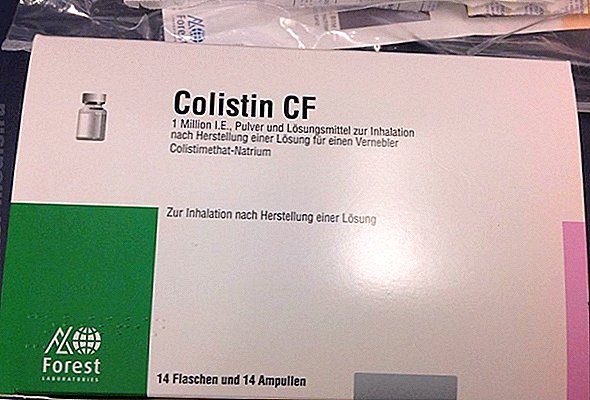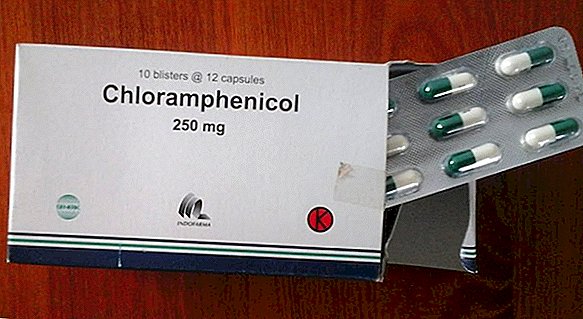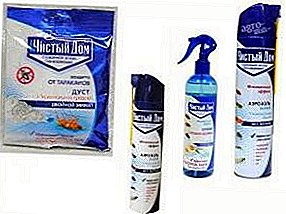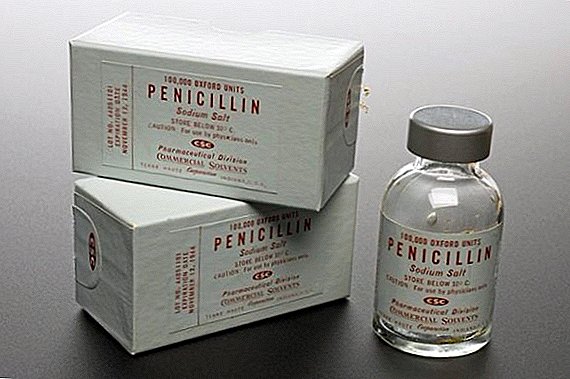 When breeding domestic rabbits, there is always a risk that they can become ill with various diseases. Penicillin is the most popular treatment for many diseases. Let's take a closer look at what it is, what kind of penicillin can be treated by a rabbit, what are the features of using this drug and how else can these fluffy animals be treated.
When breeding domestic rabbits, there is always a risk that they can become ill with various diseases. Penicillin is the most popular treatment for many diseases. Let's take a closer look at what it is, what kind of penicillin can be treated by a rabbit, what are the features of using this drug and how else can these fluffy animals be treated.
What is penicillin
Penicillins are a whole group of antibiotic drugs that are obtained from the culture fluid of different types of mold of the genus Penicillium. These substances have high antibacterial activity, allowing to win a lot of diseases. 
What kind of penicillin is safe for a rabbit?
There is only one type of penicillin, which is safe and will bring as little harm to this animal as possible. It is called Penicillin-G Procaine and is used in the manufacture of the drug bicillin. It is used only as an injection and is used very carefully.
Rabbit breeders should learn how to treat: psoroptosis, flatulence, viral hemorrhagic disease, conjunctivitis, pasteurellosis and scabies in rabbits, as well as get acquainted with infectious diseases of rabbits that are transmitted to humans.
What diseases can a rabbit use it with?
Penicillin-G Procain in Bicillin is used to treat:
- chronic and infectious rhinitis;
- otitis media;
- lung infections;
- severe abscesses with bone lesions;
- rabbit syphilis;
- dysbacteriosis.

How to give and where to prick penicillin rabbits
Intramuscular injection is administered mainly to adults. The course of taking antibiotics is long - 2 months, and because of the small volume of muscle mass of babies, it will not be possible to find places for long-term repeated injections of the drug.
Vaccination is one of the main ways to prevent various infectious diseases. We recommend reading about what vaccinations are needed in rabbits and when to vaccinate, and also review instructions for using Rabbiwak V and Associated Vaccines for rabbits.
Intramuscular injections are made to the muscles of the thigh or shoulder. Intravenous (veins on the inside of the auricle) and intraosseous injections are also rarely used and are necessary only in severe cases. Most often they make exactly subcutaneous injections under the withers or in the chest area.  Also, some antibiotics can be given with food, but it is difficult to implement. The smell of antibiotics will repel the fluffy animal from food and water, which can only worsen the pet's condition. For the treatment of acute rhinitis use another method of administration of the drug - an antibiotic diluted with water and pipette instilled into each nostril, trying to get as deep as possible.
Also, some antibiotics can be given with food, but it is difficult to implement. The smell of antibiotics will repel the fluffy animal from food and water, which can only worsen the pet's condition. For the treatment of acute rhinitis use another method of administration of the drug - an antibiotic diluted with water and pipette instilled into each nostril, trying to get as deep as possible.
To get rid of staphylococcus, bitsillin is administered intramuscularly in the form of a solution. The solution is made strictly before administration using water for injection or isotonic sodium chloride solution. Enter the drug every 3-4 days, on the first day give a double dose. The duration of treatment is 1-2 weeks.
In order to properly organize the care and maintenance of eared animals, it is necessary to become familiar with all the subtleties of breeding rabbits at home.
During the fight against septicemia, from 10 to 20 thousand units of the drug per 1 kilogram of weight should be ingested into the animal's body. Daily ulcers treated with a solution of brilliant green (50%). From wandering pyemia, as well as from mastitis, the dose will be 15-10 thousand units of Bicillin per 1 kg of weight. 
What needs to be added during treatment to water to help an animal's gastrointestinal tract
During the use of antibiotics, both in humans and in fluffy rodents, the gastrointestinal tract suffers. To avoid possible problems and complications, you need to add powder containing acidophilic bacteria to the drinking water.
It will probably be useful for you to learn how to use "Lactic acid", "Chiktonik", "Iodine", "Gamavit", "Baytril", "Ditrim" and "Amprolium" for rabbits.
What other antibiotics can be used to treat rabbits
For the treatment of fluffies, several other types of popular antibiotics are successfully used. But the most important thing to know is which antibiotics are strictly forbidden to use.
Safe
The following types of antibiotics are safe for rabbits:
- Enrofloxacin (to overcome diseases of the urinary and reproductive system, organs of the respiratory system, treatment of purulent abscesses, preventing the appearance of infections after surgery);

- Oxytetracycline (from pasteurellosis);

- Colistin (from infections of the gastrointestinal tract);

- Chloramphenicol (in the treatment of otitis, rhinitis, infections of the lungs and urogenital system);

- Gentamicin (externally for the treatment of purulent wounds and abscesses);

- Fuzidovaya acid (eye diseases).

Dangerous antibiotics
For rabbits do not allow the use of:
- Amoxicillin;
- Ampicillin;
- Lincomycin;
- Clindamycin;
- Tylosin;
- Erythromycin.
We recommend to consider the types of diseases in ornamental rabbits and methods of their treatment.
All these drugs cause severe diarrhea, cardiac arrest and can provoke the death of rabbits.
The thoughtless use of antibiotics, as well as the complete refusal of treatment, are extreme measures, to which it is better not to resort. The main thing in treatment is correct diagnosis and unquestioning fulfillment of the doctor’s prescriptions.


















